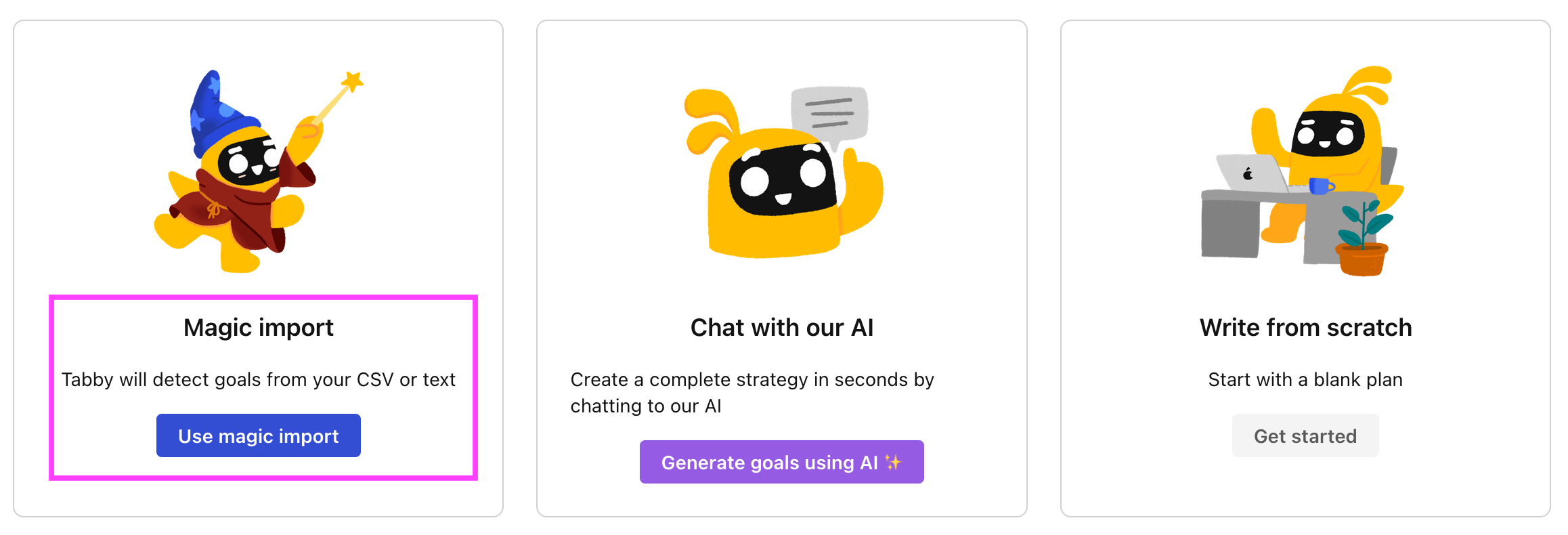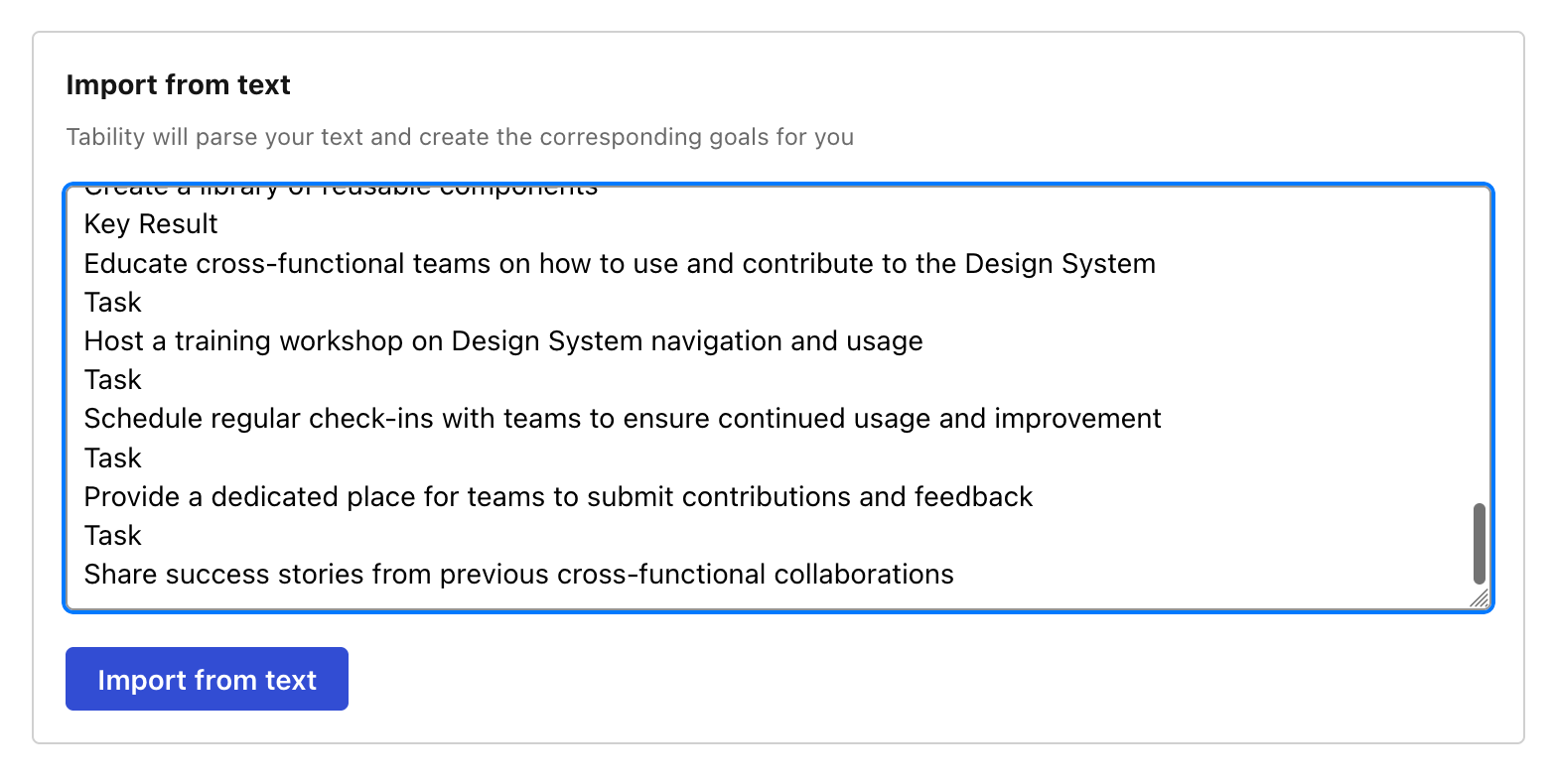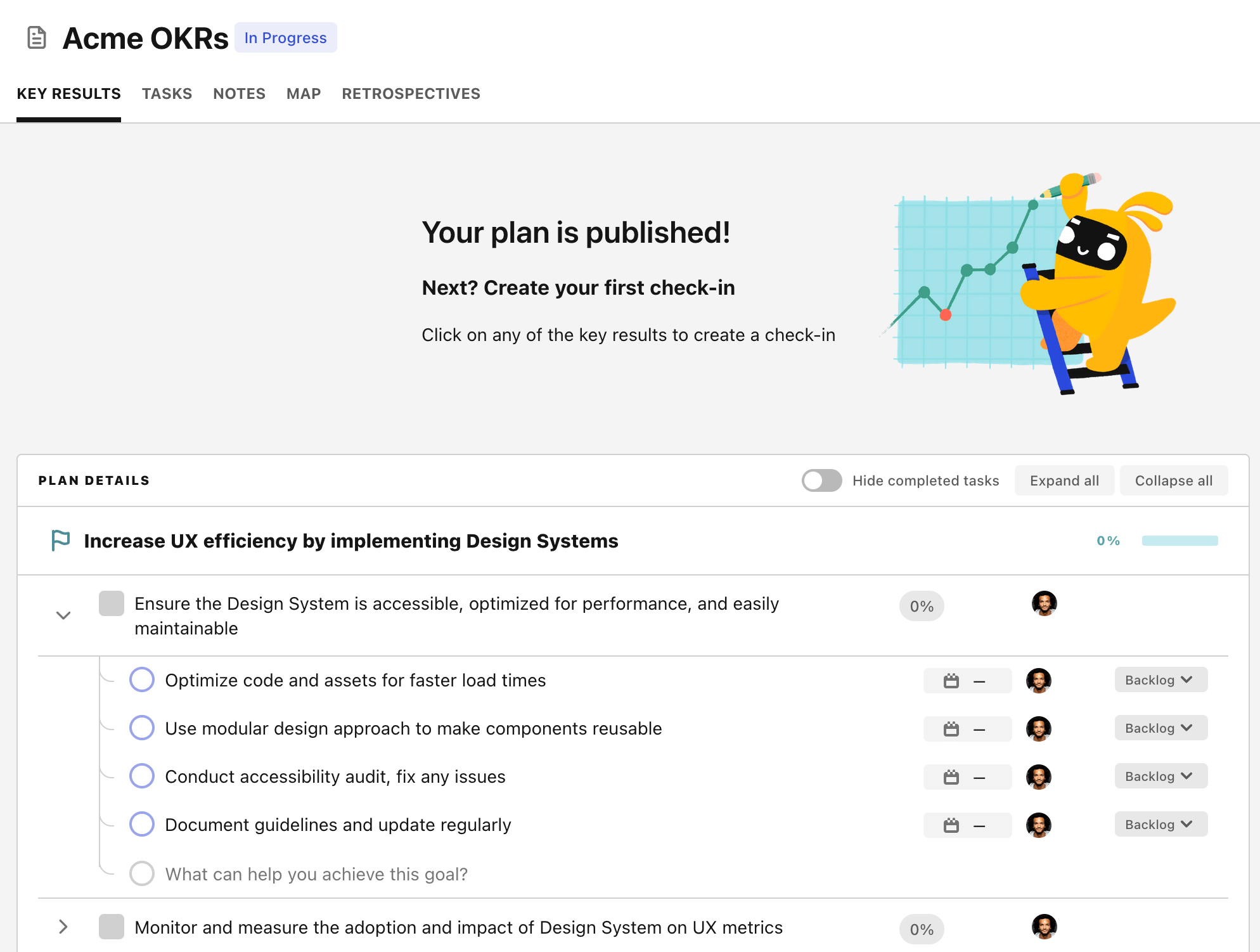OKR template to boost operational efficiency through AI integration
Your OKR template
The first outcome is focused on saving time through automation. The initiatives for achieving this include identifying tasks best suited for AI automation, implementing appropriate AI solutions, and monitoring and adjusting the efficiency improvements.
The second outcome looks at improving accuracy in analytics and reporting through AI. This would mean developing and implementing an improved AI-driven data analytics model, refining algorithms to increase their accuracy, and regularly testing the model against various data sets.
The third outcome concerns reducing costs through the optimization of processes. The initiatives here are staff training on AI for operational tasks, using AI analytics to make informed decisions, and the implementation of AI systems to handle mundane tasks.
ObjectiveBoost operational efficiency through AI integration
KRReduce manual task completion time by 30% using AI automation
Monitor efficiency improvements and adjust as required
Identify tasks best suited for AI automation
Implement suitable artificial intelligence solutions
KRAchieve 95% accuracy in AI-driven data analytics and reporting
Develop and implement an improved AI-driven data analytics model
Refine algorithms based on test results to improve accuracy
Test model accuracy against diverse data sets continuously
KRDecrease operational costs by 20% through AI-optimized processes
Train staff to use AI for operational tasks
Utilize AI analytics for informed decision-making
Implement AI systems to automate repetitive processes
How to edit and track OKRs with Tability
You'll probably want to edit the examples in this post, and Tability is the perfect tool for it.
Tability is an AI-powered platform that helps teams set better goals, monitor execution, and get help to achieve their objectives faster.
With Tability you can:
- Use AI to draft a complete set of OKRs in seconds
- Connect your OKRs and team goals to your project
- Automate reporting with integrations and built-in dashboard
Instead of having to copy the content of the OKR examples in a doc or spreadsheet, you can use Tability’s magic importer to start using any of the examples in this page.
The import process can be done in seconds, allowing you to edit OKRs directly in a platform that knows how to manage and track goals.
Step 1. Sign up for a free Tability account
Go tohttps://tability.app/signup and create your account (it's free!)
Step 2. Create a plan
Follow the steps after your onboarding to create your first plan, you should get to a page that looks like the picture below.

Step 3. Use the magic importer
Click on Use magic import to open up the Magic Import modal.
Now, go back to the OKR examples, and click on Copy on the example that you’d like to use.

Paste the content in the text import section. Don’t worry about the formatting, Tability’s AI will be able to parse it!

Now, just click on Import from text and let the magic happen.

Once your example is in the plan editor, you will be able to:
- Edit the objectives, key results, and tasks
- Click on the target 0 → 100% to set better target
- Use the tips and the AI to refine your goals
Step 4. Publish your plan
Once you’re done editing, you can publish your plan to switch to the goal-tracking mode.

From there you will have access to all the features that will help you and your team save hours with OKR reporting.
- 10+ built-in dashboards to visualise progress on your goals
- Weekly reminders, data connectors, and smart notifications
- 9 views to map OKRs to strategic projects
- Strategy map to align teams at scale